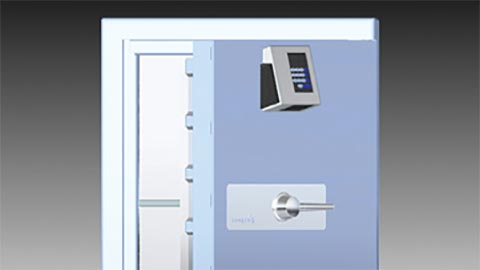Create a new generation of products
Create a new generation of products

Case Study
Safe manufacturer uses Solid Edge to create a new generation of products
Waldis
Siemens Digital Industries Software solution enables Waldis to achieve significantly enhanced product development process
Maximum protection
The number of break-ins is rising in Switzerland, and in the process about 90 percent of the safes are either cracked or removed.
“This doesn’t succeed in the case of Waldis safes,” says Rainer Schmid, who is co-owner and assistant general manager of Waldis, and is principally in charge of technology. “The models developed and manufactured in Switzerland have the highest degree of resistance to break-in in their class.”
To prevent safes from being cracked or removed, Waldis, which was established in 1983, is banking on 4-fold to 8-fold safe anchoring, practically gap-free closing doors with internal hinges, high-quality multiple plating and high-security electronic locks. Waldis is so confident of this technology that it provides customers with a 20-year warranty against break-ins.
A new beginning
It wasn’t always that way. When Schmid and his partner Urs Menzi took over the company in 2006 from founder Hans Waldis, they soon had to look for a new certification authority for the safes. “As providers of quality solutions, we decided on the strictest inspecting authority for secure storage units at the German VdS in Cologne in order to obtain certification under European standard EN 1143-1,” says Schmid. “Testing showed some opportunities for improvement.”
However, instead of settling for fine-tuning, the partners decided to develop a completely new product generation. In their search for a suitable tool, Schmid first contemplated 2D systems, but settled on 3D technology, which he became acquainted with while reviewing different products. When he got the opportunity to try out the 2D/3D computer-aided design (CAD) functionality in Solid Edge® software from product lifecycle management (PLM) specialist Siemens Digital Industries Software, the decision was made.
“Solid Edge had the simple user guidance and the broad range of functions that I was looking for,” recalls Schmid. He was even able to start redevelopment without attending the introductory training program.
Thanks to the 3D display on the screen, it was easy for Schmid to include partner Urs Menzi in the development. Menzi was easily able to contribute alternative solutions and new ideas. “With Solid Edge, we are easily finding successful product ideas together, which we are able to implement efficiently,” says Menzi.
“Only one part from the earlier series, a locating set screw, is re-used in the new products,” says Schmid.
Synchronous technology
The new product line, available since 2009, provides standardized degrees of resistance from two to five, and a height of 550 to 1,500 millimeters. This resulted in more than 20 variants. The 3D system allows for the development of a modular system with the greatest possible number of identical parts, which facilitates more efficient production. Individual parts are developed, produced as samples and tested in the different assemblies.
“The simple collision detections show immediately which changes still have to be incorporated so that components can be used in as many variants as possible,” says Schmid.
Depending on the number of locks and mechanisms, the assemblies comprise between 80 and 200 components and require about 300 megabytes (MB) of memory; on Hewlett Packard HP Z620 workstations, they can be processed swiftly and without waiting times.
Schmid sees a great advantage in using synchronous technology, which has been a part of Solid Edge for some time. Among other things, it offers a “steering wheel” in the user guide with which geometric regions can be grabbed and modified by dragging. In the end position, the entire model adapts to the newly selected shapes and sizes, so designing variants becomes easy.
“Through synchronous technology, the system has improved significantly,” says Schmid. “I am really excited about how easy it is to operate. Synchronous technology means a quantum leap in the user-friendliness of 3D CAD systems.”
